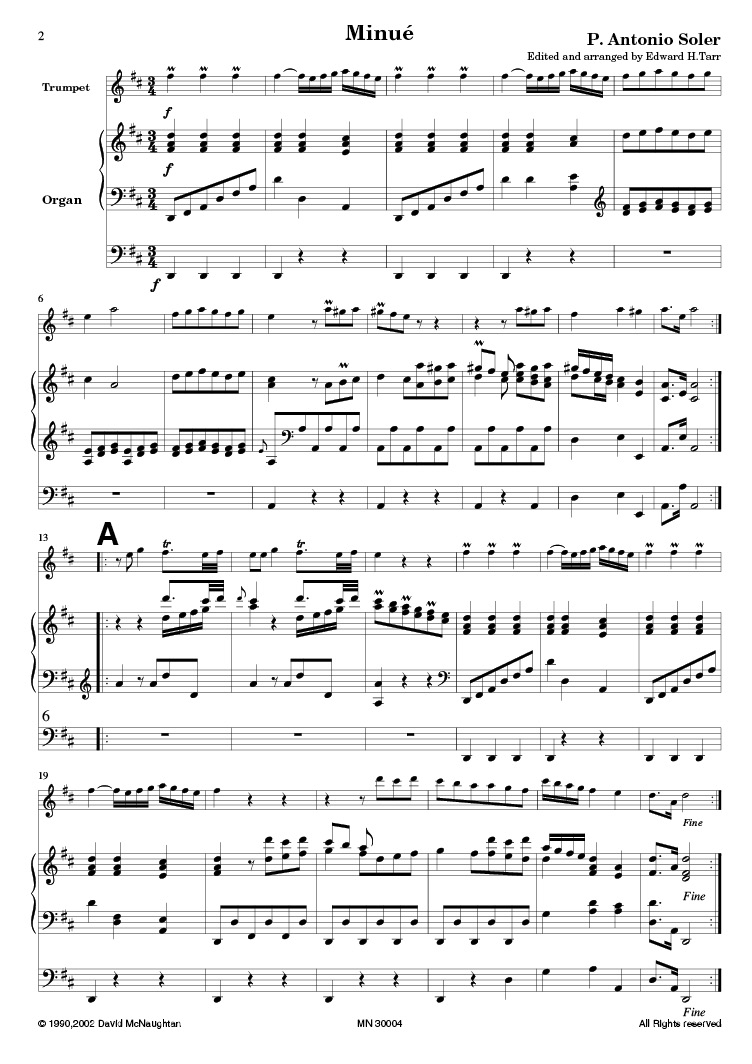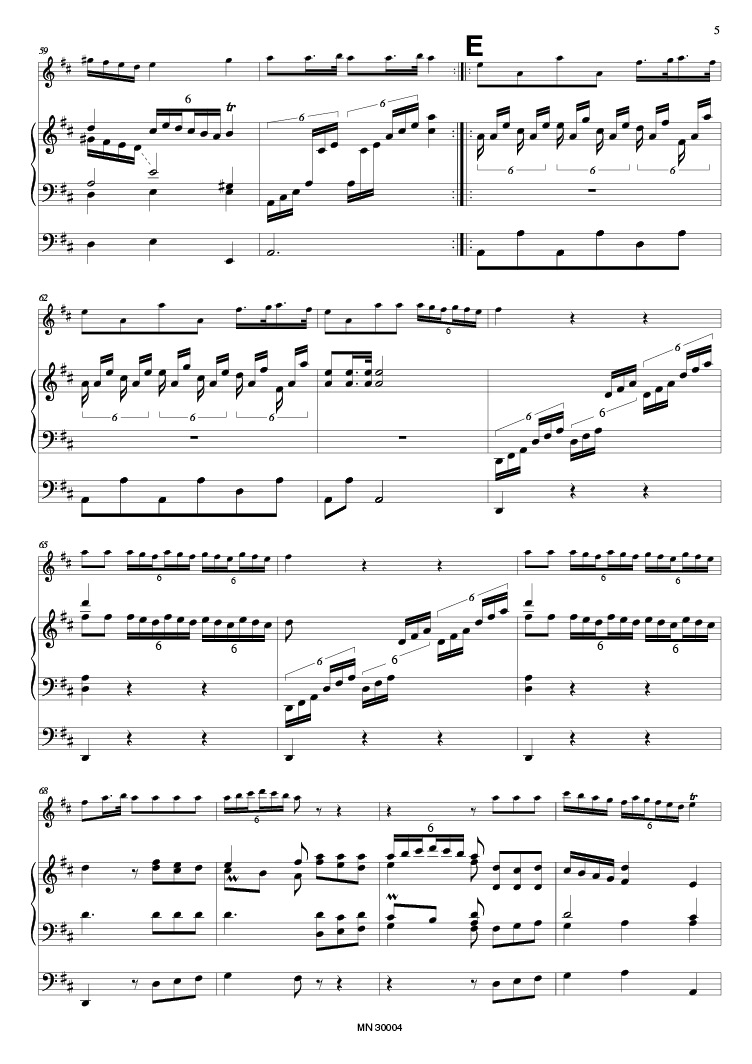
Soler/Tarr Menué
Difficulty (I-VI): V-VIParts for: Trumpet in D and high A, Organ
Series: Edward Tarr Brass
Editor: Edward H. Tarr
Padre Antonio Soler, perhaps the best-known Spanish composer of the 18th century, was born in Catalonia and attended the venerable choir school in Montserrat, Catalonia (from 1736), served for a short time (c. 1750-1752) as maestro de capilla in Lleida (Lerida), and in September of 1752 entered the Order of St. Jerome in El Escorial, where he spent the rest of his life.
Each autumn, the royal family paid the famous cloister a long visit, and so it was that Soler became the keyboard-instrument teacher of Prince Gabriel, for whom he also composed many pieces, including harpsichord sonatas and six concertos for two organs (or harpsi- chords). These works were performed by Soler himself and his royal pupil in a small palace specially constructed between 1768 and 1772 in the Escorial grounds for Gabriel’s concerts. Our Minué is the final movement of the sixth Concerto. It is sufficiently well known that the Iberian peninsula possessed a distinctive organ tradition. Among its characteristics is the fact that here, more than anywhere else in the world, there was a strong mutual influence between organ and wind music. For example, Iberian – that is, Spanish and Portuguese – organs from about 1680 on display the characteristic “horizontal trumpets”, pungent reed stops which Iberian composers loved to employ in their battle pieces (“batallas” or “batalhas”, respectively); in addition, Iberian organs display a strikingly high proportion of stops with wind-instrument names from the middle of the 16th century onwards. Furthermore, we know of performances from that time on in which wind instruments were played together with the organ. The sounds of these performances have long since faded away, the scores and parts have been lost. If we wish to revive this old performing tradition, we must do intensive research. In the search for performable trumpet music, the presence of the harmonic series is a clue, for the trumpet of that day was inextricably associated with this series of notes.
In the present minuet, Soler makes lavish use, an almost exclusive use, of melodic material from the harmonic series, to a much greater extent than previous composers with their batallas, thus imitating natural horns and trumpets (in their favourite key of D major, by the way). I derived the idea of my transcription of this minuet from E. Power Biggs (1906-1977), who once performed part of it, after a transcription of his own for one organ, on one of the three historic organs of Toledo Cathedral. (See his recording, under the title “The Emperor’s Fanfare”, on Columbia Masterworks Stereo MS 7109, “Historic Organs of Spain”.) My own transcription, which was made in the year of the 200th anniversary of Soler’s death, is dedicated to the memory of Biggs, that great pioneer in the performance of earlier music on the appropriate organs throughout the world.



